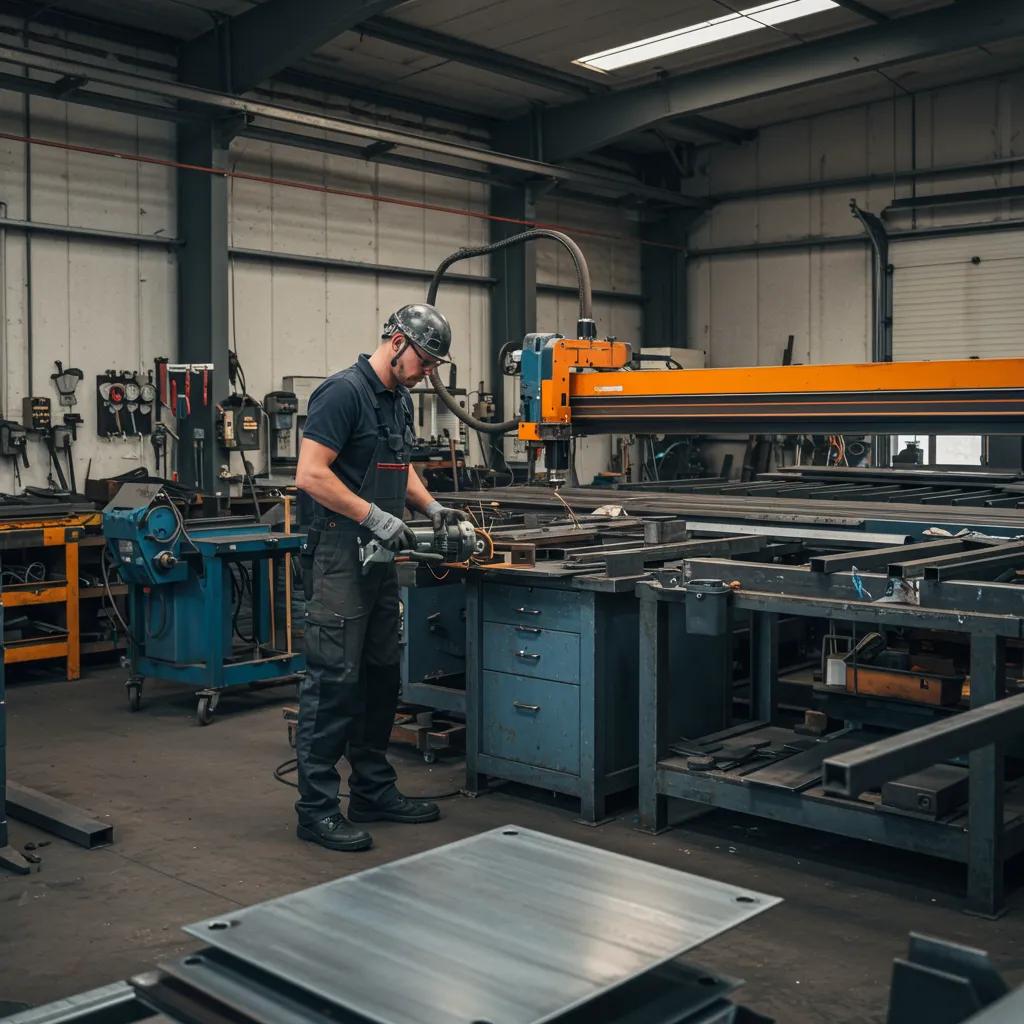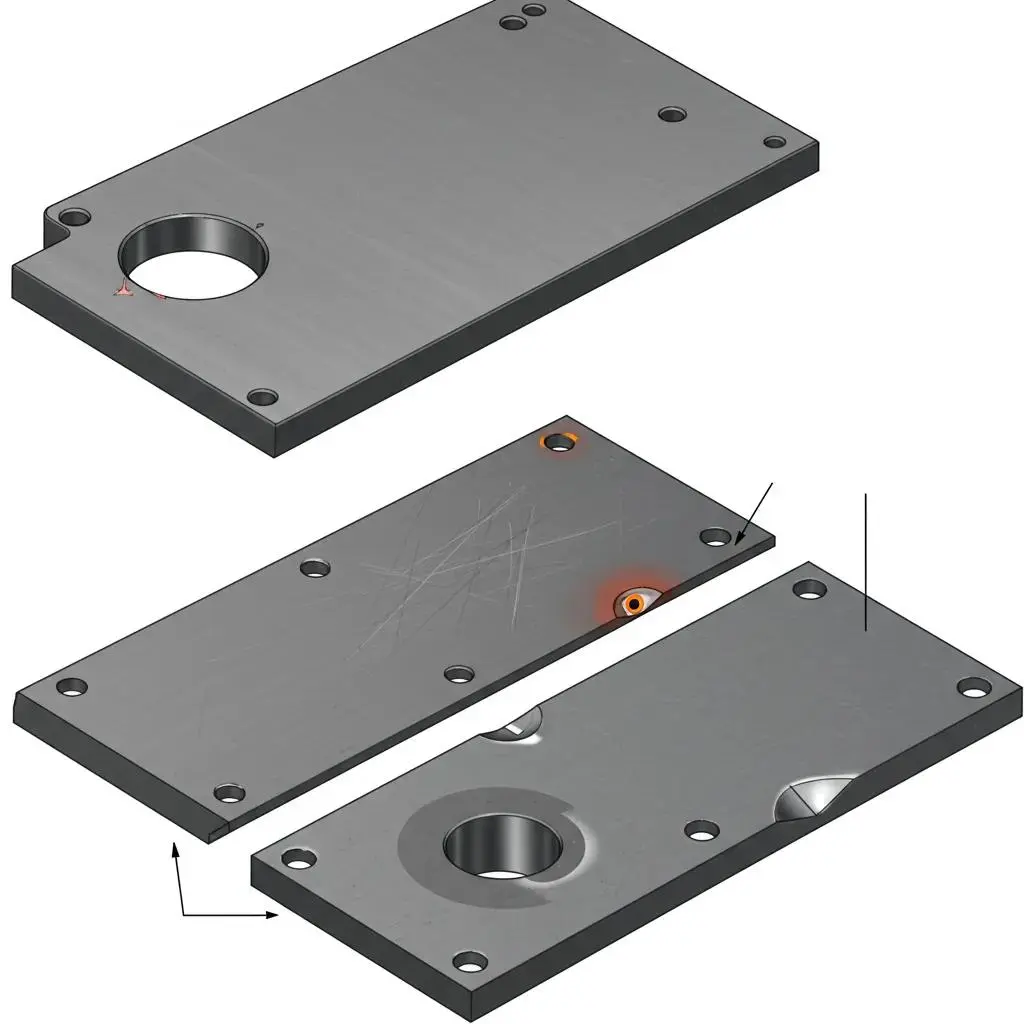
Over 20 to 30 percent of sheet metal parts sourced from China require adjustments due to quality defects, leading to assembly delays and cost overruns. This article maps critical themes from dimensional accuracy and surface finish to material consistency, process-specific failures, and sourcing strategies so procurement teams can anticipate and mitigate risks. Readers will learn how common defects arise, their impacts on fit and function, and proven prevention methods, while also discovering practical approaches to supplier verification and quality management.
Understanding dimensional precision exposes the next challenge of surface finish integrity.
What Are the Most Common Dimensional Accuracy Issues in Sheet Metal Fabrication from China?

Dimensional inaccuracies such as springback, warping and misaligned features top the list of concerns when evaluating parts from Chinese fabricators. These deviations compromise tolerance, assembly fit and mechanical performance.
Dimensional Inaccuracies in Sheet Metal Fabrication
Dimensional inaccuracies, such as springback, warping, and misaligned features, are significant concerns in sheet metal fabrication, particularly when sourcing from China. These defects can compromise tolerance, assembly fit, and mechanical performance, leading to rework and delays.
Which Dimensional Defects Affect Sheet Metal Parts Sourced from China?
Springback occurs when metal elastically recovers after bending, warping distorts flatness under uneven stress, and inconsistent hole placement disrupts assembly alignment. Each defect undermines precision and can force rework.
What Causes Dimensional Inaccuracies in Chinese Sheet Metal Fabrication?
Improper bending parameters, worn tooling, suboptimal machine calibration and uncontrolled thermal stress drive deviations. When press brakes lack springback compensation or fixtures lack rigidity, parts rarely meet design specifications.
Bringing tool maintenance and calibration into focus guides us toward the tangible impact of these errors.
How Do Dimensional Issues Impact the Fit and Function of Sheet Metal Parts?
Dimensional defects lead to gaps in assemblies, misaligned fasteners, and compromised load-bearing surfaces. A warped panel can twist weld seams, while holes outside tolerance prevent automated insertion affecting final product reliability.
What Are Effective Solutions to Prevent Dimensional Defects When Sourcing from China?
To reduce inaccuracies, implement regular tooling inspections, enforce machine calibration schedules, and validate bending programs with test batches. Employ coordinate measuring machines (CMM) for first-article inspections and monitor process parameters in real time.
Below is a concise overview of common dimensional defects, their impacts and primary prevention tactics.
| Defect Type | Impact | Prevention |
|---|
| Springback | Angle deviations after bending | Apply springback compensation and correct tooling |
| Warping | Loss of flatness and planarity | Use uniform clamping and controlled cooling |
| Inconsistent Hole Placement | Assembly misalignment and fastener issues | Calibrate punch tooling and verify CNC programming |
These measures set the stage for addressing how surface quality influences aesthetics and corrosion resistance.
How Do Surface Finish Defects Affect Sheet Metal Parts from China?

Surface finish problems scratches, burrs, dents and powder-coating flaws are prevalent in mass-produced components and can undermine product appearance and longevity.
What Are Common Surface Finish Problems in Chinese Sheet Metal Fabrication?
Manufacturers often deliver parts with unremoved burrs, handling scratches, small dents, discoloration or pinholes in protective coatings. Such imperfections stem from aggressive cutting, manual handling lapses or inconsistent pre-treatment.
What Causes Surface Finish Defects in Sheet Metal Parts from China?
Surface flaws arise from contaminated tooling, incorrect feed rates, inadequate deburring, and improper powder-coating parameters. When pre-treatment baths lack filtration or spray booths exceed humidity limits, adhesion failure and orange peel textures emerge.
Mitigating surface defects leads us to evaluate their functional and visual consequences.
How Do Surface Defects Impact Aesthetics and Corrosion Resistance?
Burrs and rough edges accumulate moisture and debris, accelerating corrosion. Discolored or uneven coatings compromise visual appeal and may violate brand standards. Rough surfaces also reduce paint adhesion, increasing maintenance costs.
What Are Best Practices to Avoid Surface Finish Issues When Sourcing from China?
Adopt automated deburring stations, enforce clean-room handling protocols, and specify filtration standards for chemical treatments. Request thickness and adhesion tests on coated parts, and include sampling in first-article inspections.
To illustrate, the following table highlights key surface defects alongside causes and quality-control measures.
| Defect | Cause | Quality Control Measure |
|---|
| Burrs | Inadequate cutting speed or worn tooling | Schedule tooling maintenance and optimize feed |
| Scratches | Poor handling or contaminated surfaces | Institute protective packaging and cleaning |
| Orange Peel | Improper powder coating and curing parameters | Calibrate spray guns and monitor curing cycles |
With surface integrity preserved, material properties emerge as the next focal point.
What Material Quality Issues Are Frequent in Sheet Metal Sourcing from China?
Variations in raw material composition and thickness often lead to brittleness, reduced ductility and microscopic impurities that compromise part strength.
Which Material Defects Commonly Occur in Chinese Sheet Metal Parts?
Buyers report inconsistent gauge thickness, hidden mill scale, subgrade alloy mixes and sporadic porosity. These defects originate in unvetted steel or aluminum batches lacking certification.
What Are the Root Causes of Material Quality Problems in China Sourcing?
Suppliers may source from multiple mills without traceable certificates or mix different steel grades to cut costs. Inadequate entry-inspection protocols allow off-spec metal into production.
How Do Material Defects Affect Structural Integrity and Part Performance?
Impurities and brittle zones can initiate cracks under load, while uneven thickness leads to unpredictable formability. Critical components risk failure during bending, stamping or under dynamic stress.
How Can Buyers Ensure Material Quality When Sourcing Sheet Metal from China?
Require mill test certificates (MTC), mandate third-party spectrographic analysis and conduct on-site material audits. Standardize specifications in purchase orders and establish acceptance criteria for hardness and tensile strength.
Ensuring consistent materials paves the way to understanding process-specific challenges.
What Are the Key Process-Specific Quality Defects in Chinese Sheet Metal Fabrication?
Each fabrication step introduces unique defects from laser cutting to deep drawing that require targeted controls.
What Laser Cutting Defects Should You Watch for When Sourcing from China?
Laser cutting can produce burrs, heat-affected zones (HAZ), dross and edge roughness. Optimizing laser power, assist gas and focal distance reduces these issues.
Which Bending and Stamping Defects Are Common in Chinese Sheet Metal Parts?
Springback, wrinkling, cracking and tool marks appear when press brakes and stamping dies lack fine-tuning. Progressive die alignment and die lubrication help maintain consistency.
What Welding Defects Occur in Sheet Metal Components from China?
Porosity, undercutting, incomplete fusion and cracks emerge from improper welding parameters, gas contamination or poor joint fit-up. Ensuring proper shielding gas flow and weld-joint preparation prevents these flaws.
What Powder Coating and Finishing Problems Affect Sheet Metal from China?
Orange peel, poor adhesion, pinholes and contamination in coatings result from inadequate pre-treatment and uncontrolled spray conditions. Enforcing filtration limits and curing profiles enhances finish durability.
What Are Typical Deep Drawing and CNC Machining Defects in Chinese Fabrication?
Deep drawing may cause fracture, wrinkling and earing, while CNC machining can suffer dimensional deviations, tool wear and vibration marks. Calibrated blank-holder forces, tool-path validation and machine maintenance guard against these failures.
Process-specific oversight highlights the final imperative: robust sourcing practices.
How Can You Overcome Unique Quality Challenges When Sourcing Sheet Metal from China?
Targeted strategies ensure that defects are caught early and corrected before mass production.
What Communication and Specification Barriers Affect Quality in China Sourcing?
Language differences, inconsistent standard references and vague drawings often lead to misinterpretation of tolerances and surface requirements. Clear, annotated CAD models and bilingual specifications bridge this gap.
How Does Supplier Verification Improve Sheet Metal Quality from China?
Distinguishing between trading companies and true manufacturers via factory audits, ISO 9001 certification checks and financial due diligence confirms production capabilities and process controls.
What Quality Control and Inspection Strategies Are Effective for Chinese Sheet Metal?
Implement first-article inspection (FAI), in-process checks (IPQC) and final visual and dimensional audits (OQC). Engage third-party inspectors for unbiased validation and use statistical process control (SPC) charts to monitor trends.
How Do Robust Quality Management Systems Mitigate Defects in China Sourcing?
An ISO 9001-aligned QMS enforces standardized procedures, continuous improvement cycles and corrective-action protocols. This framework harmonizes raw material verification, process monitoring and final delivery, driving defect reduction and consistent part performance.
Effective quality management completes the end-to-end assurance chain for global procurement teams.
Get A Free Quote For Your Sheet Metal Fabrication
Talk to our experts. Our qualified engineers are always happy to answer your questions.


















